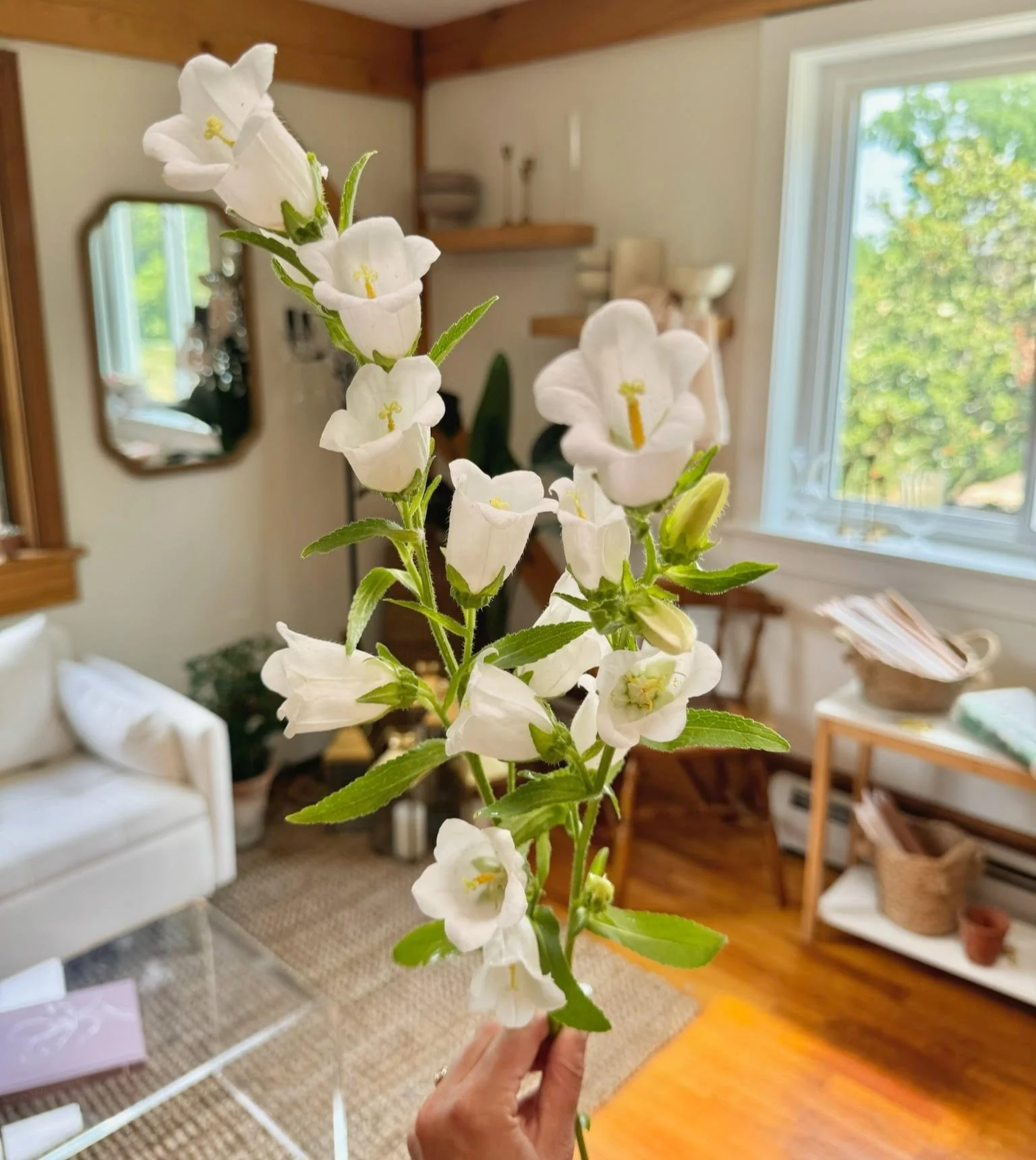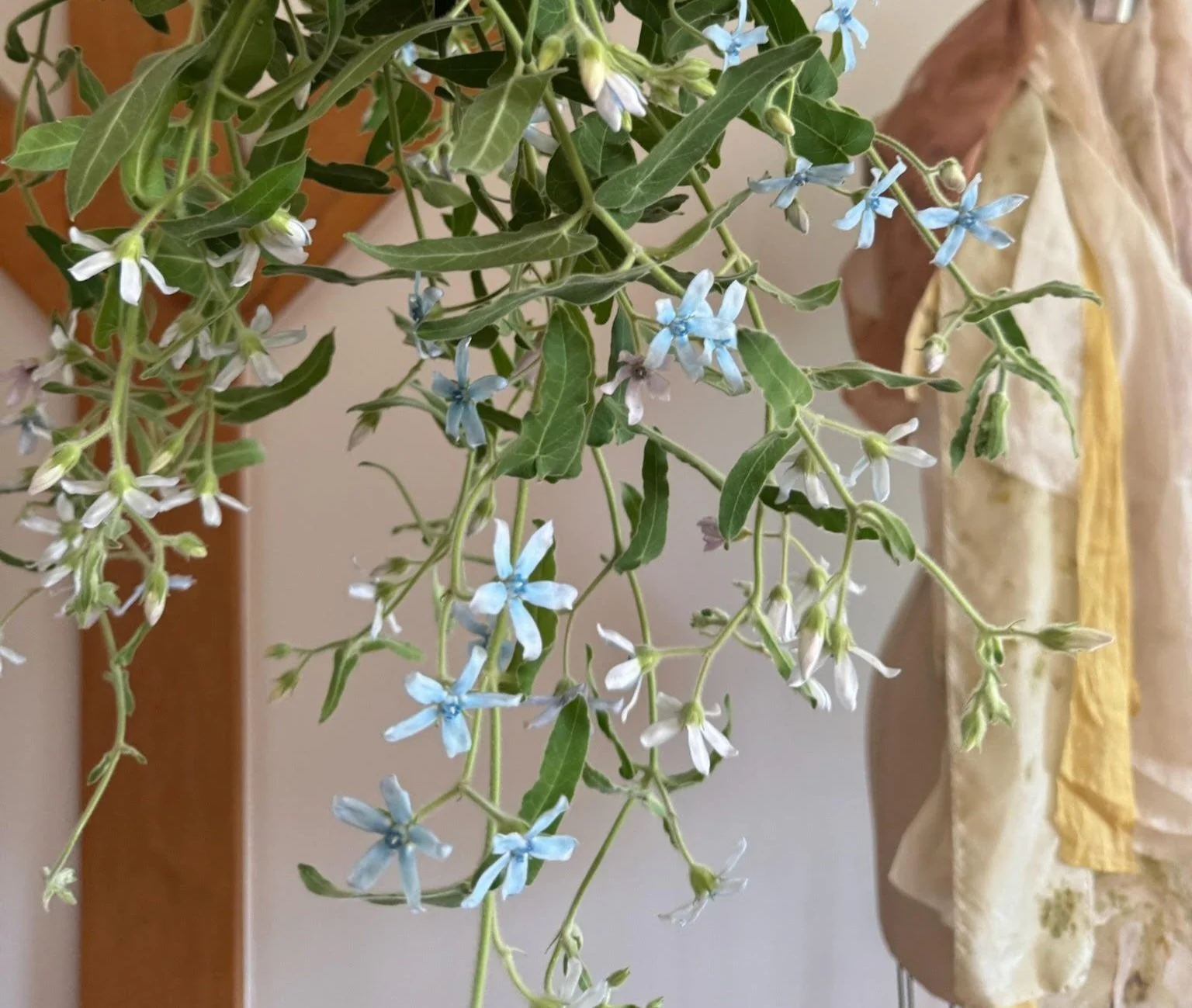The Three Most Underrated Cut Flowers
If you’re perusing articles outlining the best cut flowers, you’re not likely to come across the three varieties listed below. But while they may not be as popular as dahlias or zinnias, they are each productive, beautiful and easy enough to grow that they deserve a spot in your garden. And if you’re a budding flower farmer looking to grow for wholesale, you’ll have no shortage of florists looking to get their hands on these wedding and event favorites.
Campanula from our late June garden
Campanula
I only started growing Campanula last year, and I’m not sure why I waited so long. Sometimes referred to as “Canterbury Bells” or “Bellflower”, it’s a late spring/early summer bloom that has the most perfect cup-shaped flowers. It takes a relatively long time to go from seed to bloom (especially by an annual’s standards), so seeds should get started in the winter in either a greenhouse, hoophouse, or indoors with grow lights. Once it’s transplanted to the field in the spring, it’s important to provide support to ensure the stems grow straight enough to be usable. A horizontal trellis is best.
Campanula is most commonly grown in shades of white, pink, lavender, and darker purple; if I could only pick one, I’d pick white - it’s just so elegant and complements so many other flowers in the garden perfectly in June, though the lavender shade is a close runner-up.
Tweedia from the mid-August garden
Tweedia
I’m always surprised that more people don’t grow this creamy, dreamy, sparkling blue variety. One of the few “true blue” flowers (it also comes in shades of white), tweedia is a top pick for bridal clients. Ours begins blooming in the early summer, and then gets a little wild -in a good way - by the end of summer. In order to let it do its thing, I grow it along a vertical trellis, similar to how we raise sweet peas and love-in-a-puff. Tweedia’s vase life is excellent, and it can tolerate being out of water longer than most dainty flowers, making it a great choice for summer bridal bouquets.
Tweedia’s only real downside is the sap it emits. It’s related to milkweed and oozes a similar milky sap that, admittedly, is pretty icky (and smells like cheese - not in a good way - if you get close to it). The sap can be a little irritating to skin, so some folks may wish to wear gloves or wash their hands after handling it.
Yarrow from the early June garden
Yarrow
The unsung hero of the garden each season is productive yarrow - an edible flower and medicinal herb that reliably attracts beneficial insects to the garden. It’s easy to grow from seed, but as a perennial, it’s a pretty slow-grower at first, so it’s best to start seeds in the late winter to ensure they’re ready to transplant in May or so. If you haven’t had a chance to get a headstart on this textural filler, though, it’s no worries - the plants are often available at garden centers each spring.
While yarrow is slow to get started, it’s worth noting that some varieties can become pretty aggressive in the garden and spread underground year-after-year; some varieties are even considered invasive. We keep ours confined in a large raised bed, and I haven’t personally had any issues with it becoming problematic in this way. (I also happily and intentionally grow mint, so maybe my tolerance for aggressive plants is high!)
But beyond its medicinal, edible benefits, yarrow is an exceptional flower that can elevate any arrangement. The definition of a “supporting actor,” yarrow provides a lacy, delicate background to best highlight the beauty of larger, showstopping “lead actors” of a bouquet. It makes its way into virtually every one of our weddings when it’s in season.



